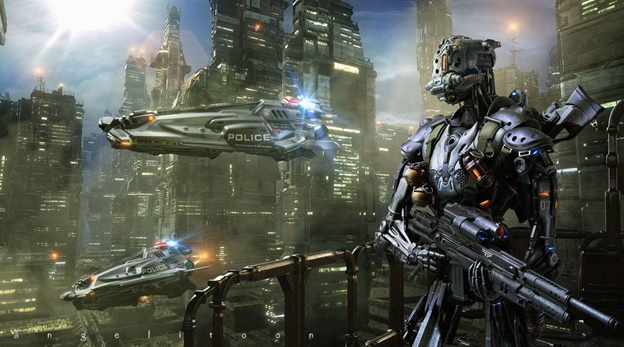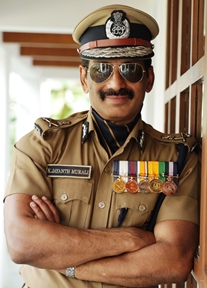A LOOK AT POLICING IN 2050

Policing is a profession that is constantly evolving. As the years go by and technology becomes more sophisticated, we will create new methods for keeping communities safe. The future of policing is already in sight. Technology is not just changing the way police officers do their jobs. It is changing how we hire, train, and manage police officers. But while the technological changes are coming fast and furious, it is essential to look at the technology itself and how we use it. Policing is still a fundamentally human activity that relies on the ability to read people, process information, and accurately identify threats. Therefore, while technology is helping to change policing, it will not change everything. Only humans can make the right decisions at the right time and ensure that communities are safe.
What Is the Future of Policing?
The future of policing is about a world where technology and human interaction are at the forefront. It’s about a place where police get empowered with the tools and technology they need to succeed. And it’s also about a world where the everyday interactions between citizens and police are more comfortable and productive. That is the future of policing.
Soon, we’ll see many departments integrating AI, IoT, and machine learning into their daily operations. It’s a future where we use technology to empower officers and better serve their communities. And it’s a future where we will use technology to improve the way we do things. We’re at a point where the lines between human and machine intelligence are becoming increasingly blurred.
In the future, we’ll see an increase in data-driven policing strategies, which would allow departments to focus their limited resources on the areas where they’ll have the most significant impact. It will also enable them to create real-time data dashboards that we can use to analyse crime and predict future crime patterns. The future of policing will also see increased collaborative initiatives between departments and cities. That will allow for more efficient and effective use of resources and more effective community engagement.

How Will Technology Impact Police?
A myriad of technological advancements will shape the future of policing. But, perhaps the most exciting aspect is that it will bring to life the idea that “we can put or use technology to empower officers and better serve their communities.” The first step in this direction is the continued rise of wearable tech. Police and first responders are already wearing various wearable devices to reduce risk and increase productivity. We’ll see an increase in the number of uses for wearable technology in the future—everything from body cameras and smartwatches to helmets, cameras, and contact lenses. Wearable tech will also allow us to see a rise in voice recognition and speech-to-text software. That will enable officers to document and transcribe their interactions with civilians in real-time. It’s also likely that we’ll see an increase in eye-tracking and facial recognition software. We can use such software pieces to identify and track suspects and witnesses and verify identities to ensure compliance with legal processes. It will be essential to consider the level of privacy involved when using these technologies.

The next step in using technology will be the integration of AI and machine learning into daily operations. We will use AI and ML to automate and expedite repetitive tasks and support decision-making. It will allow for real-time analysis of large volumes of data. It will also allow for the study of unstructured data, such as photos and videos. We will use AI to expand the use of computer vision or the ability for machines to see and understand the world around them, allowing for the creation of real-time alerts and maps that we will use to predict potential threats to an officer and public safety. We will also use AI to automate the collection of critical data. It will be able to recognise patterns and anticipate potential risks while also taking corrective actions. These actions include sending alerts, such as those related to officer safety or the need to respond to a crime in progress. We will use AI to automate the collection and analysis of data. Officers will use data to inform their decisions and help them understand the community they’re policing.
Augmented Reality in the Police Setting

Augmented reality or AR, immersive technology blends digital technology with the real world. It uses various camera-based components to superimpose computer-generated images and information over a user’s objective worldview.
AR will get used in a wide variety of ways to improve policing. That includes everything from helping bridge the gap between officers and the community to enhancing officers’ understanding of crime, criminal investigations, and daily operations. Police organisations will use Augmented reality also to provide contextual information on locations. That could include digital signage, maps, or other content related to the specific site. This information can help officers understand the community and make informed decisions.
The use of AR in the future of policing will also include the integration of virtual reality, allowing officers to experience different scenarios in the field. That could allow them to practice tactical scenarios, such as running an active shooter drill, in a safe and controlled environment. VR will also enable officers to experience things like a traffic stop through the user’s own eyes. That gives officers a better understanding of what they’ll encounter on the street and how they can prepare for it.
Virtual Reality and the Future of Policing
Virtual reality is quickly becoming a staple in the modern world. It allows users to experience and interact with different types of content, including computer-generated environments. It’s the next frontier for the future of policing. Police will use VR for various purposes, including training and simulation. VR will allow officers to experience different scenarios and understand how their decisions will impact their situation. VR will also allow officers to interact with other officers and civilians while in the field. VR will enable officers to experience different types of content, including virtual reality simulations of other cities, futuristic cities, and other environments. This content can help officers understand their role in the community, where their priorities should be, and how they can improve. It’s also a great way for officers to prepare for specific scenarios.

Chatbots, Virtual Assistants, and AI in Law Enforcement
Technology will increasingly get used as an enabler for ambitious projects. That’s what’s happening in the realm of AI. This cutting-edge technology allows developers to create chatbots and virtual assistants that Police Departments can use to automate and expedite repetitive tasks and make complex decisions. Police agencies can use a chatbot to automate repetitive tasks, such as small talk with customers or scheduling in-person meetings. But, they can also use it to expedite more complex tasks, such as scheduling a conference call or conducting a flight search. It can even help with more imaginative tasks, such as scheduling a date night with a spouse. Police organisations will use Virtual assistants and bots to help with more complex decisions. Police may use virtual assistants to check and create criminal records. These assistants can identify and flag relevant information, such as a person’s criminal record, and direct officers to the appropriate place within the system. Police will also use AI to expand the use of computer vision and facial recognition. To allow officers to identify and track suspects and witnesses and verify identities to ensure compliance with legal processes.

If one were to conjure up a scenario of crime detection in 2050 and ask me – What types of crimes will police departments be fighting in 2050? Right off the bat, I think we’ll see thought crimes. Imagine thinking about murdering someone. The AI sensors will detect the thought, and the individual thinking about the murder would be taken in immediately for the offence of attempt to murder. Drones with facial recognition capability and weapons will replace law enforcement officers who, from the safety and comfort of a chair, would command drones to kill any human being they deem a “terrorist.” With no need for consequences associated with killing someone by mistake or accident. Nobody would complain about accidental killings because it just wouldn’t happen anymore! Humans will have government implants beginning at birth that record their thoughts, so there won’t even be an excuse for people daring enough not to conform to party lines or dress codes; for those who do not follow orders, machine intelligence will automatically place them on wanted lists. Implantation includes fingerprints, DNA samples, yearly photos, speech patterns, retinal scans, Colonic maps, what-have-you, which makes me wonder if implanted humans also have an identifying chip inside them like some pets do now?

Hardcore “terrorists” will be those who live off of the grid, do not conform to the Government or dress as ordered, and those who dare to think for themselves. Hearing the wrong music, reproducing without, and other things will make a person a threat to the state.
Plastic appliances will replace metal knives or anything that could be a weapon or accidentally kill someone. There will be no human drivers as all vehicles will be self-driving. Automated self-driving cars will chauffeur everyone around. Hence there won’t be drive-offs, police car chases, terrorists using vehicles to plough into crowds, or car-jacking or using explosive-laden cars to ram into the target and no pollution and petrol problems as all cars would be either solar-powered or electric. Police would be able to disable any vehicle or vehicle suspected of carrying a terrorist or criminal and redirect the vehicle to the nearest police station. Automation will cover police work, administration, crime detection or policy.

Robots will patrol the streets, arrest the offenders and also defuse bombs. To bring some human element to policing, we would see some cyborgs like Robocops with some human emotion. Although it will become difficult for humans to commit crimes, AI and robots are likely to commit crimes against humans, a dystopic unthinkable scenario. Ray Kurzweil has forecast that Singularity will be attainable by 2045. At this point, machine intelligence will surpass or equal human intelligence. Various scenarios are predicted, most of them dystopian hence when this happens, the future of humankind itself could be at stake. Policing in 2050 will be highly Hitech as various exponential technologies will synergies and produce mind-blowing technologies which could go out of control due to the speed at which the technological innovations will unfold and leave lawmakers behind. Hence, the Governments and decision-makers must take stock and find ways to grapple with the exponential technologies that are growing at a breakneck speed by enacting laws and placing curbs on them so that they don’t spin out of the machines always remain under the control of humans.

Conclusion
Technology is constantly changing, and it will impact policing in many ways in the next decade. Innovations in AI and machine learning will help strengthen relationships between officers and the communities they serve. Police organisations will use wearable tech to enhance officers’ visibility and awareness. And AR and VR will allow officers to interact with their environment much more realistic way.
As the first-responders in every community, the police community must be equipped with the tools and technology to succeed. The future of policing will depend on the evolution of these technologies and how police organisations use them.
 Dr.K. Jayanth Murali is an IPS Officer belonging to 1991 batch. He is borne on Tamil Nadu cadre. He lives with his family in Chennai, India. He is currently serving the Government of Tamil Nadu as Additional Director General of Police, Idol Wing CID.
Dr.K. Jayanth Murali is an IPS Officer belonging to 1991 batch. He is borne on Tamil Nadu cadre. He lives with his family in Chennai, India. He is currently serving the Government of Tamil Nadu as Additional Director General of Police, Idol Wing CID.
